-
Home
- Precalculus
- Functions
- Functions and function notation
We will see these toolkit functions, combinations of toolkit functions, their graphs, and their transformations frequently throughout this book. It will be very helpful if we can recognize these toolkit functions and their features quickly by name, formula, graph, and basic table properties. The graphs and sample table values are included with each function shown in
[link] .
| Toolkit Functions |
| Name |
Function |
Graph |
| Constant |
where
is a constant |
 |
| Identity |
|
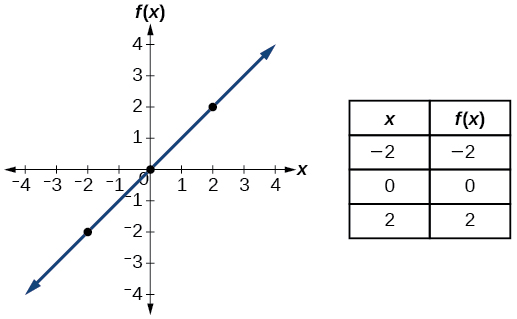 |
| Absolute value |
|
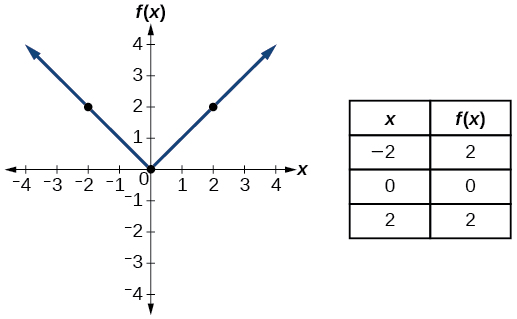 |
| Quadratic |
|
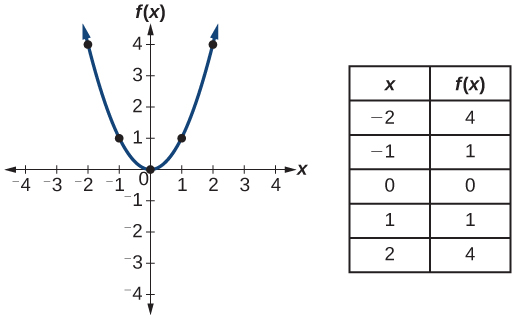 |
| Cubic |
|
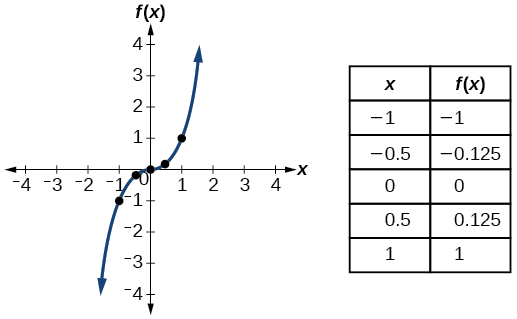 |
| Reciprocal |
|
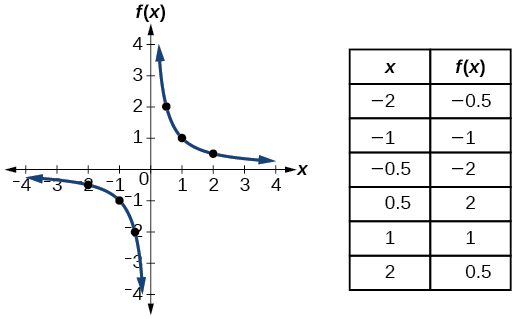 |
| Reciprocal squared |
|
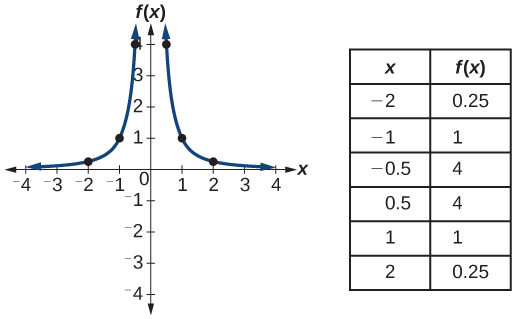 |
| Square root |
|
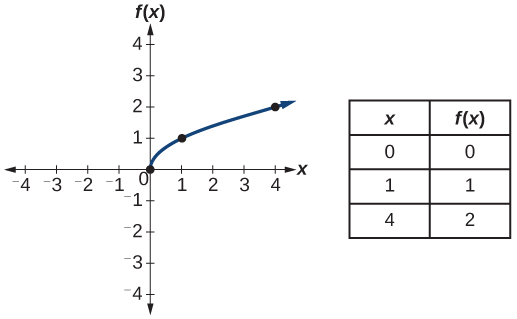 |
| Cube root |
|
 |
Key equations
| Constant function |
where
is a constant |
| Identity function |
|
| Absolute value function |
|
| Quadratic function |
|
| Cubic function |
|
| Reciprocal function |
|
| Reciprocal squared function |
|
| Square root function |
|
| Cube root function |
|
Key concepts
- A relation is a set of ordered pairs. A function is a specific type of relation in which each domain value, or input, leads to exactly one range value, or output. See
[link] and
[link] .
- Function notation is a shorthand method for relating the input to the output in the form
See
[link] and
[link] .
- In tabular form, a function can be represented by rows or columns that relate to input and output values. See
[link] .
- To evaluate a function, we determine an output value for a corresponding input value. Algebraic forms of a function can be evaluated by replacing the input variable with a given value. See
[link] and
[link] .
- To solve for a specific function value, we determine the input values that yield the specific output value. See
[link] .
- An algebraic form of a function can be written from an equation. See
[link] and
[link] .
- Input and output values of a function can be identified from a table. See
[link] .
- Relating input values to output values on a graph is another way to evaluate a function. See
[link] .
- A function is one-to-one if each output value corresponds to only one input value. See
[link] .
- A graph represents a function if any vertical line drawn on the graph intersects the graph at no more than one point. See
[link] .
- The graph of a one-to-one function passes the horizontal line test. See
[link] .
Section exercises
Verbal
What is the difference between a relation and a function?
A relation is a set of ordered pairs. A function is a special kind of relation in which no two ordered pairs have the same first coordinate.
Got questions? Get instant answers now!
Why does the vertical line test tell us whether the graph of a relation represents a function?
When a vertical line intersects the graph of a relation more than once, that indicates that for that input there is more than one output. At any particular input value, there can be only one output if the relation is to be a function.
Got questions? Get instant answers now!
Questions & Answers
for the "hiking" mix, there are 1,000 pieces in the mix, containing 390.8 g of fat, and 165 g of protein. if there is the same amount of almonds as cashews, how many of each item is in the trail mix?
linear speed of an object
an object is traveling around a circle with a radius of 13 meters .if in 20 seconds a central angle of 1/7 Radian is swept out what are the linear and angular speed of the object
Melissa
like this: (2)/(2-x)
the aim is to see what will not be compatible with this rational expression. If x= 0 then the fraction is undefined since we cannot divide by zero. Therefore, the domain consist of all real numbers except 2.
Dan
define the term of domain
Moha
if a>0 then the graph is concave
if a<0 then the graph is concave blank
Angel
The set of all values you can use as input into a function su h that the output each time will be defined, meaningful and real.
Spiro
how fast can i understand functions without much difficulty
what is inequalities
Nathaniel
functions can be understood without a lot of difficulty.
Observe the following:
f(2) 2x - x
2(2)-2= 2
now observe this:
(2,f(2)) ( 2, -2)
2(-x)+2 = -2
-4+2=-2
Dan
a colony of bacteria is growing exponentially doubling in size every 100 minutes. how much minutes will it take for the colony of bacteria to triple in size
I got 300 minutes. is it right?
Patience
no. should be about 150 minutes.
Jason
It should be 158.5 minutes.
Mr
100•3=300
300=50•2^x
6=2^x
x=log_2(6)
=2.5849625
so, 300=50•2^2.5849625
and, so,
the # of bacteria will double every (100•2.5849625) =
258.49625 minutes
Thomas
158.5
This number can be developed by using algebra and logarithms.
Begin by moving log(2) to the right hand side of the equation like this:
t/100 log(2)= log(3)
step 1: divide each side by log(2)
t/100=1.58496250072
step 2: multiply each side by 100 to isolate t.
t=158.49
Dan
what is the importance knowing the graph of circular functions?
can get some help basic precalculus
What do you need help with?
Andrew
how to convert general to standard form with not perfect trinomial
can get some help inverse function
ismail
it depends on the equation
Robert
yeah, it does. why do we attempt to gain all of them one side or the other?
Melissa
how to find x:
12x = 144
notice how 12 is being multiplied by x. Therefore division is needed to isolate x
and whatever we do to one side of the equation we must do to the other.
That develops this:
x= 144/12
divide 144 by 12 to get x.
addition:
12+x= 14
subtract 12 by each side. x =2
Dan
The domain of a function is the set of all input on which the function is defined. For example all real numbers are the Domain of any Polynomial function.
Spiro
Spiro; thanks for putting it out there like that, 😁
Melissa
foci (–7,–17) and (–7,17), the absolute value of the differenceof the distances of any point from the foci is 24.
Source:
OpenStax, Precalculus. OpenStax CNX. Jan 19, 2016 Download for free at https://legacy.cnx.org/content/col11667/1.6
Google Play and the Google Play logo are trademarks of Google Inc.









